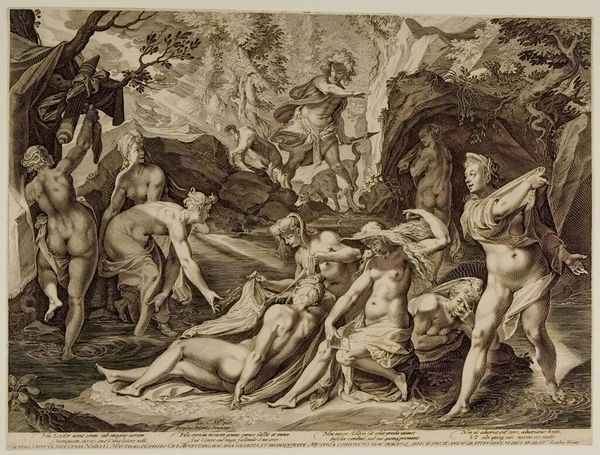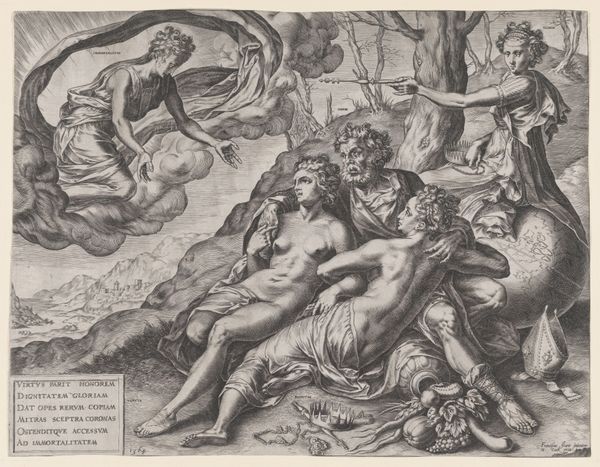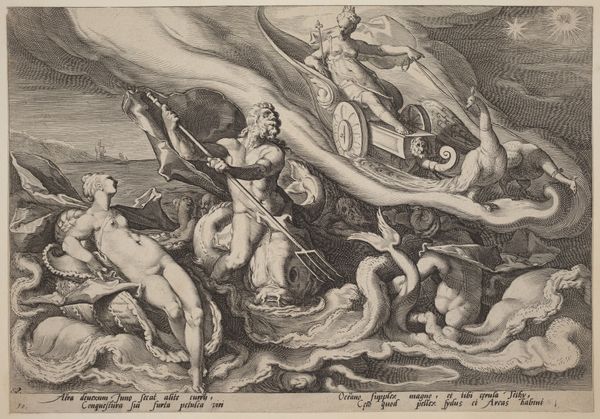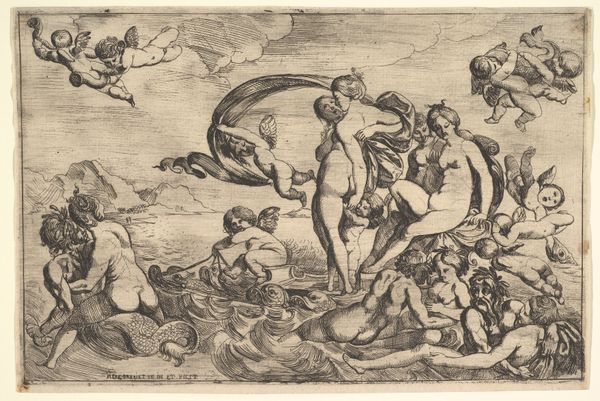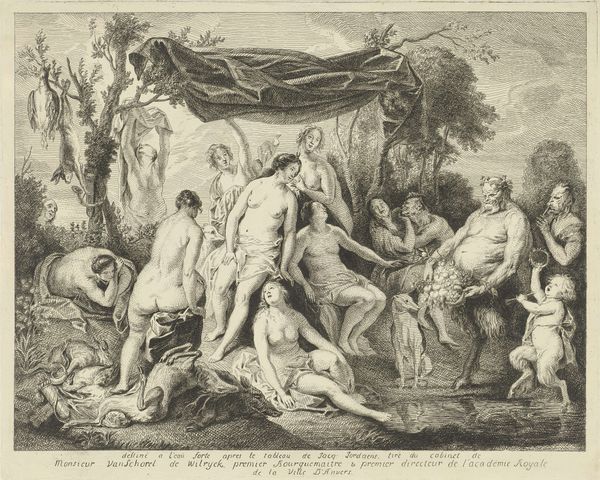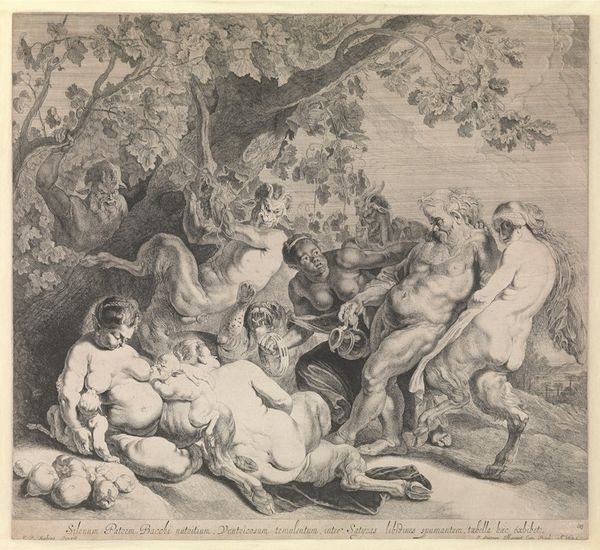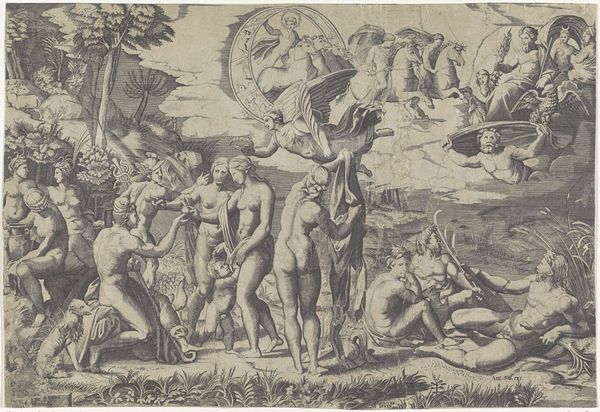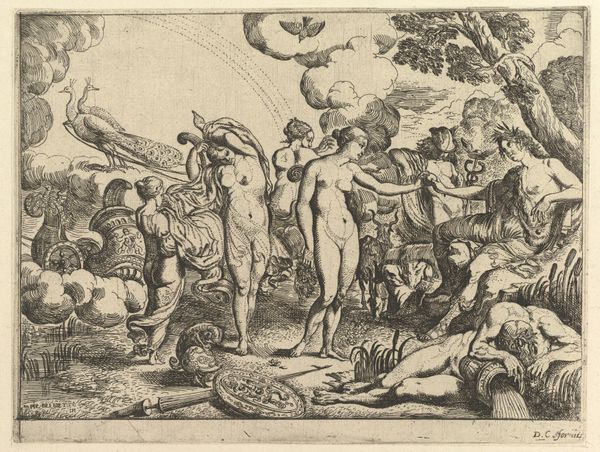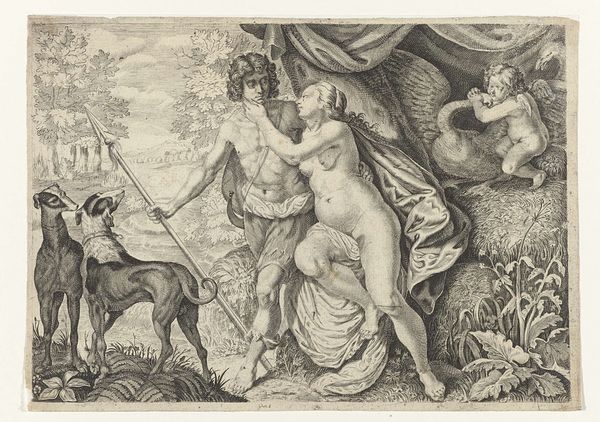
engraving
#
allegory
#
baroque
#
classical-realism
#
figuration
#
line
#
history-painting
#
nude
#
engraving
Dimensions: height 379 mm, width 538 mm
Copyright: Rijks Museum: Open Domain
This is Jacob Matham’s "Diana and Actaeon," an engraving made in the late 16th or early 17th century, now at the Rijksmuseum. The artwork’s visual field is defined by a dynamic interplay between light and shadow, created through intricate engraving techniques. Observe how the composition is structured around diagonal lines and overlapping forms, creating depth and a sense of movement. The arrangement of figures and landscape elements directs the viewer's eye across the scene, inviting us to explore the narrative. Matham uses a semiotic system of signs to convey meaning. The depiction of Diana and her nymphs bathing is a cultural code for purity and the sacredness of nature. Actaeon's intrusion disrupts this order, leading to his transformation and punishment. The artwork destabilizes fixed meanings of voyeurism and divine retribution, engaging with new ways of thinking about transgression and fate. Consider how the formal quality of the engraving—its precise lines and tonal gradations—functions not just aesthetically, but also as part of a larger discourse on human versus the divine, ultimately contributing to the work’s complex philosophical underpinnings.
Comments
No comments
Be the first to comment and join the conversation on the ultimate creative platform.
